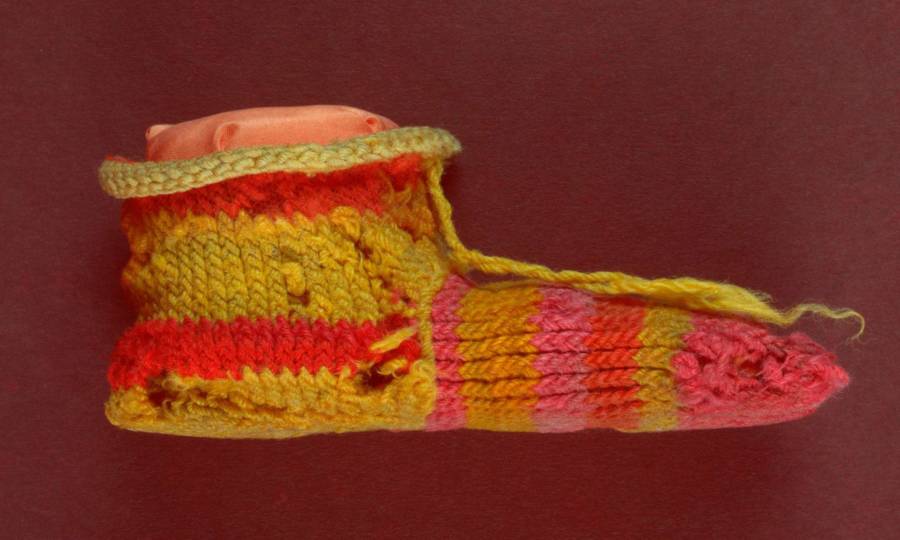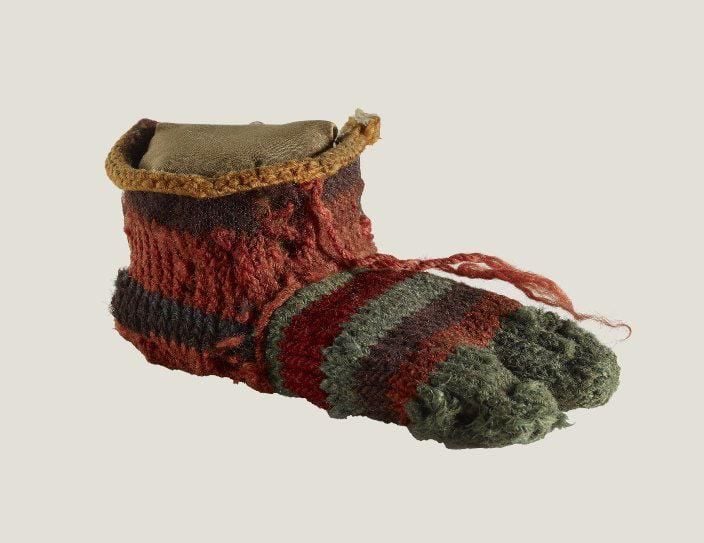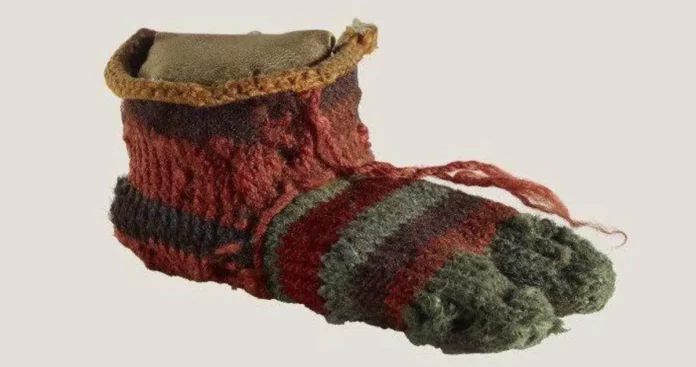The discovery of a single sock from Ancient Egypt has provided an incredible glimpse into the fashion, manufacturing, and trade practices of a civilization that flourished over 1,700 years ago. First unearthed in 1913, this humble piece of clothing has taken researchers over a century to decode its secrets. This article explores the journey of this ancient sock, the technology used to study it, and the fascinating insights it offers about the Late Antique period of Egyptian history.
The Unusual Find
Everyone knows the frustration of losing a sock. Now, imagine finding one 1,700 years later. That’s exactly what happened when an Ancient Egyptian sock was discovered in a trash dump in the early 1900s. The sock, dating back to around 300 A.D., was first uncovered during the 1913-1914 excavation in the Egyptian city of Antinooupolis. It was meant for a child’s left foot and featured the traditional Egyptian style of one compartment for the big toe and a larger one for the other four toes, allowing it to be worn with sandals.
A Glimpse into Ancient Fashion

Today, the vibrant and colorful sock resides in the British Museum in London, where researchers are delving into its secrets using cutting-edge technology. The sock’s intricate design and the choice of dyes provide valuable information about the fashion trends and textile practices in ancient Egypt. The striped sock was crafted using just three dyes: madder (red), woad (blue), and weld (yellow). These findings highlight the Egyptians’ resourcefulness and innovative use of limited resources.
Advanced Technology Unveils Hidden Secrets

To unravel the sock’s history, researchers employed multispectral imaging (MSI), a non-invasive technique that scans artifacts and detects subtle color hints. MSI enabled the team to identify the dyes used in the sock without damaging the fragile fabric. Dr. Joanne Dyer, a scientist at the British Museum and lead author of the study published in PLOS One, emphasized the importance of this technology. “Previously, you would have to take a small piece of the material, from different areas. This sock is from 300 A.D. It’s tiny, it’s fragile, and you would have to physically destroy part of this object. Whereas with both the [multispectral] imaging and other techniques, you have a very good preliminary indication of what these could be,” Dyer explained.
Insights into the Late Antique Period

The sock provides more than just fashion insights; it offers a glimpse into the broader context of Egyptian life during the Late Antique period (250 A.D. to 800 A.D.). This era witnessed significant events such as the Arab conquest of Egypt, which influenced the economy, trade, and access to materials. The sock’s technical composition reflects these historical shifts, revealing how these events impacted everyday life and the production of clothing.
Conclusion
The discovery of the 1,700-year-old sock is a testament to the enduring legacy of ancient Egyptian civilization. Through advanced technology and meticulous research, we can uncover the intricate details of their daily lives, fashion, and trade practices. This single sock not only showcases the Egyptians’ creativity and innovation but also provides a window into a world long gone. It stands as a remarkable reminder that even the most ordinary objects can hold extraordinary stories.
